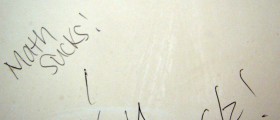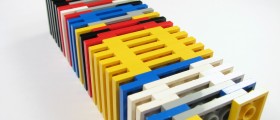
Dyslexia is a condition which mainlyappears during young age, in the first stages of education. Itmanifests through a child's inability to differentiate sounds fromone another and connected them with written signs in order to formwords, phrases and sentences. Therefore, dyslexic people tend to havedifficulties related to reading, writing and spelling, even thoughtheir intelligence levels are normal and above normal.
Additionally, dyslexic children canhave problems with performing mathematical operations, especiallywhen they need to deal with the multiplication tables, decimals,fractions, percentages, statistics and ratio. It is important todiagnose dyslexia as early as possible since, in this case, treatmentand recovery can be possible.
Educational Games for Children withDyslexia
Since the regular classroom may not bemotivational enough for dyslexic children, the teachers are advisedto introduce some interesting, educational games for them. First ofall, once a child gets diagnosed with dyslexia, he/she might lackmotivation for work or may have problems with his/her self-esteem.Therefore, the teacher can start the educational game process withcomparing the dyslexic child with some of the renowned scientists whohad the same problems. For example, Albert Einstein is one of themost famous dyslexic geniuses and his teachers scorned him oftenbecause of his frequent writing errors. However, he managed toovercome these problems through hard work and dedication toeducation.
As for the problems related tocalculation, numbers and such, there are several interesting andexciting games which can prove to be of great assistance both to theteachers and the dyslexic children. Yet, remember that taking small,gradual steps is an advised technique. Thus, do not move on with morecomplicated segments until the child has fully mastered the existinglearning units. Additionally, make sure that all the materials thatthe dyslexic child deals with match his/her capabilities and learninglevels.
If you are teaching the child to countto 100, for example, you are advised to allow the individual to fullymaster counting in forwards before teaching him/her how to performthe same operation backwards. Breaks and pauses are recommendedwhenever the child loses interest or feels overwhelmed by theeducational materials you are using.
An excellent learning tactic formastering the numbers from 1 to 100 is the one where you can use toyslike marbles. Place 100 of them on the floor, forming a long line andask the child to place a marker on each 10th marble he/shecounts. You can even use different colors for each 10 marbles he/sheencounters, making it more logical and easier for the child tounderstand the task. Once the child masters this technique, you canask him/her to do the same, placing markers on every fifth marble.This way, he/she will learn how to count five by five.
Alternatively, in order not to make themarble game boring, you can interchange it with a different game,like the one where you can call out a number and ask the child to saythe next one. Taking into consideration that the most complicatednumbers for dyslexic children to learn are the final ones between thetwo tens, you can focus on calling out many numbers ending with 9.
Multiplication and division can be madefun and games through playing with items which come in pairs. Oncethe child understands the concept of x2, you can move on to exposinghim/her to items which come in three equal units. Later on, when yourlittle student has mastered the basics of multiplication, you canmove the whole material on the board, using the standardized symbolsfor this mathematical operation. Naturally, the same can be done withdivision.
Finally, playing bingo, usingcalculators or having some other useful devices at his/her disposalare all tools which can help the dyslexic child overcome theconfusion he/she might have, related to numbers and the operationsthey need to undergo.
Further Education for Dyslexia
Since dyslexia, in some cases, mayremain present with a child even when he/she reaches high school age,teachers and tutors need to bear several rules of the thumb in mind.First of all, make sure that you speak clearly and that you can beunderstood easily by all the students in your class. Provide anoverview of the topic you are going to talk about, providing childrenwith some basic ideas which will help them learn better. Askmotivational questions and prepare useful handouts to make thetransition from introduction to the body of the class easier and moreproductive.
If you are using projectors, keep thecontent limited and clear. Yet, rest assured that dyslexic childrenwill not answer your questions on their own or manage to function ina group. Thus, in order to help them overcome this issue, expose themto as many learning methods you can; use laptops, music, pictures,diagrams etc.
Revise often and focus on receivingfeedback from the dyslexic child. If he/she has understood most ofthe things you were teaching, the lesson was well planned andsuccessful. Furthermore, motivate the children to work at home byintroducing email homeworks, typing or some articles which they canfind through individual research. Ultimately, do not focus on thespelling or the handwriting of the dyslexic individual. Rather,concentrate on the acquired knowledge and the theoretical andpractical feedback he/she provides.
All in all, in order to help dyslexicchildren, you need to be a creative, imaginative and playful teacher,creating lessons which will motivate these children to progress andovercome their learning problems.

















Your thoughts on this
Loading...